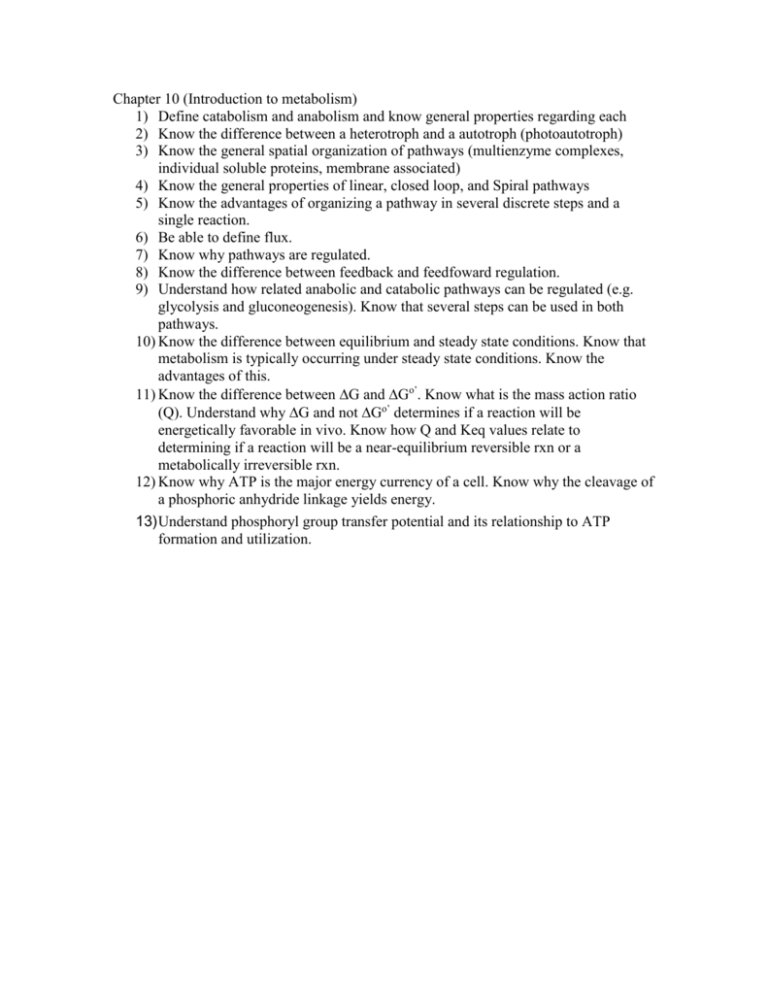Chapter 10 Summary
advertisement

Chapter 10 (Introduction to metabolism) 1) Define catabolism and anabolism and know general properties regarding each 2) Know the difference between a heterotroph and a autotroph (photoautotroph) 3) Know the general spatial organization of pathways (multienzyme complexes, individual soluble proteins, membrane associated) 4) Know the general properties of linear, closed loop, and Spiral pathways 5) Know the advantages of organizing a pathway in several discrete steps and a single reaction. 6) Be able to define flux. 7) Know why pathways are regulated. 8) Know the difference between feedback and feedfoward regulation. 9) Understand how related anabolic and catabolic pathways can be regulated (e.g. glycolysis and gluconeogenesis). Know that several steps can be used in both pathways. 10) Know the difference between equilibrium and steady state conditions. Know that metabolism is typically occurring under steady state conditions. Know the advantages of this. 11) Know the difference between G and Go’. Know what is the mass action ratio (Q). Understand why G and not Go’ determines if a reaction will be energetically favorable in vivo. Know how Q and Keq values relate to determining if a reaction will be a near-equilibrium reversible rxn or a metabolically irreversible rxn. 12) Know why ATP is the major energy currency of a cell. Know why the cleavage of a phosphoric anhydride linkage yields energy. 13) Understand phosphoryl group transfer potential and its relationship to ATP formation and utilization.











